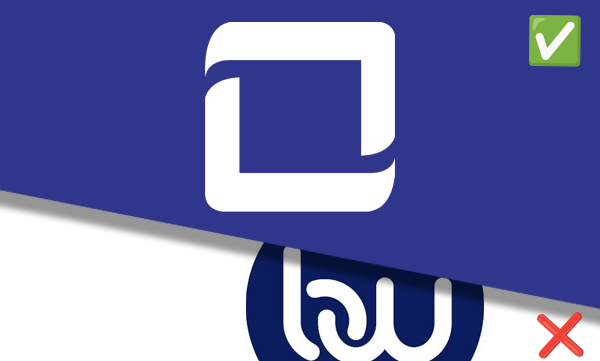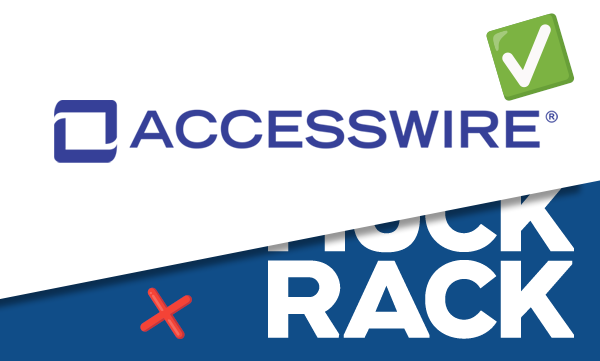Developing Effective B2B Public Relations Strategies: A Guide
Being in public relations for a business-to-business company or agency is a little bit oxymoronic; your job is to communicate with other businesses, so technically, it could be called “Relations,” since the “Public” doesn’t necessarily come into play. (We’ll stick with PR, though, for the sake of clarity – and in the hope that you will keep reading this blog, and not think we are too weird….)
Speaking of this blog, it’s a perfect example of a B2B public relations tool, because it is created for professionals who work at, or on behalf of, other businesses. Of course, there are similarities between B2B PR and traditional B2C public relations, but make no mistake: B2B public relations is a different animal altogether, and we will get into that in a bit.
First, let’s tackle the alphabet soup that represents the most common audiences to which marketers speak:
- G2B: (government-to-business, such as when a department in the government or military releases a Request for Proposal from B2B organizations that provide the needed goods and services).
- B2G: (the reverse of G2B)
- G2C: (government-to-citizens, most commonly used to announce policy changes or new laws, but also to inform people about dangerous situations in a community, state, or the country)
- C2B: (consumer-to-business, where the B2B customer shops for prices for goods and services, and businesses act as a broker – think about companies like Booking.com or Expedia as representative of this segment)
- C2C: (eBay or Facebook Marketplace are good examples where consumers circumvent a business, opting instead to sell to or buy from other consumers)
- B2E: (business-to-employees, where the main goal is to educate a company’s staff in order to keep talent retention higher than it might be, otherwise)
Check back in 10 or 15 minutes – we might uncover additional ingredients to the soup by then….
Why is B2B Public Relations So Important?
Okay, back to what makes B2B PR a different animal. Whether yours is a small, medium, or enterprise business, your B2B public relations program goals are as follows:
- Relationship-building as opposed to only raising brand awareness.
- Establishing lines of communication in the hopes of creating a partnership, now or in the future.
- Receiving referrals, even if the company receiving the communications is not able to partner with the business doing the communication, word-of-mouth recommendations are as valuable, if not more so, than B2C or any other kinds of business – and referred leads are much more important than converted ones.
- Educating potential leads on your business's goods and/or services; creating talking points for your sales and business development teams about what to cover when talking to a new lead will be enormously helpful.
- Positioning the B2B as an industry leader that solves problems for other businesses looking to eliminate operational sticking points that hinder their operations.
- Creating a bond of trust between the two B2B organizations.
So, B2B public relations matters a great deal, because without the main six bullet points above, the likelihood of a business-to-business company’s growth and success relies almost exclusively on B2B PR strategy; neither B2B marketing nor any amount of advertising comes close to the importance of B2B public relations.
Important Factors in B2B Public Relations Strategies
Here, we will give you ways in which to build, and/or improve, your B2B PR effort, so that you can leverage your efforts to a positive outcome.
Identify Your Business Goals
From the start, developing a solid foundation on which to communicate with other companies is arguably the most important step. This is an opportunity for you to assemble the C-Level leadership of your B2B business and have them provide their input on what they see as their priorities. Doing this will help you and your team develop the healthcare pr plan you will soon implement. A great way to start the conversation is to go around the conference room table and ask each person to tell you where they see your B2B company in a year, in five years, and in 10 years, specific to the departments they lead.
Research Companies and Media Contacts to Target
Remember when you assumed you would never have homework after graduation? Sorry…in business, that’s not a thing. To avoid the rabbit hole, your company could fall down by trying to build relationships with outliers, make a list of companies for which you are a logical fit. Your list doesn’t need to be a long one in the beginning, but as time goes on, you can start to expand your desired leads. The beginning of activating your B2B’s public relations plan isn’t a good time to cast a wide net.
While you are in homework mode, it’s important to identify your target journalists and your desired media outlets. Trade publications are vital to your B2B public relations when your company is ready to share your news with the industries and businesses in which you want your organization to be discoverable. Advertorials placed in industry publications are also an excellent way to get noticed.
Developing Your Company’s Message
After you’ve accomplished the last two steps, you should be ready to begin the task of creating what to say to the B2Bs you seek to attract. Be sure to involve your marketing department’s team; not only will their insight be useful, but marketing will also need to know and understand the messaging. Unified messaging on these two fronts is essential…otherwise, your communications can become ineffective and confusing.
In this phase, it is imperative that your B2B public relations and marketing messaging will need to be truthful and educational. There is no need to inflate your sales numbers, staff size, or a number of locations (plus, your B2B’s credibility is on the line, and being deceitful in your PR or B2B marketing activities will almost certainly backfire); the educational part will help your potential customers understand how your business will work on their behalf.
Identify the Best Platforms For Sharing Your Messaging
Congratulations – now you know what your B2B public relations messaging will be; the next step is to figure out where to share your messages. Depending on several factors (like your B2B company’s size, reach, and industry, among others), the platforms your business should use to deliver your messages come into play. Keeping an eye on where your direct competitors communicate their own messages will help you identify which vehicles to use. For instance, ACCESSWIRE has no need to drive its B2B PR campaign on Etsy, because our business is to offer the best press release distribution services in the industry. We don’t deliver any unique or hand-crafted products…but if your B2B does, Etsy might make sense for you as a place to be active.
There are a variety of channels in which to activate and maintain your B2B public relations messaging. Utilizing as many of the channels as possible and creating cross channel synergies will allow you to create an even stronger campaign. Here are some of the most common platforms:
- Blogs –– Including blogs on your company’s website is a great way to position your business as an industry expert and promote your products or services, but that’s just one way to communicate. Obviously, we recommend press release distribution for powerful visibility through local, regional, national or international media exposure, but there are many other places where your B2B public relations activities could use.
- Webinars/Podcasts –– Developing a weekly or monthly webinar series, where other companies looking for your services or products can learn about your industry and what your company does, is a great way interact with your target audience. Podcasts can also be useful, depending on your business and industry.
- Newsletters –– Digital and print newsletters, appearances at trade shows where your future B2B clients appear, public speaking opportunities where your leadership team can act as experts to your desired customers’ businesses, professional YouTube videos that can also be embedded on your website…all of these, and more, are open for your consideration.
Go where your target audience will be; for example, if your enterprise company is interested in working with Fortune 100 companies, starting a podcast could be useful, because busy executives are more likely to listen than take the time to visit your B2B’s Facebook page. If your company offers manual labor to local businesses, a video for your PR campaign might be the way to go. With solid public relations tactics that addresses your target audience, your B2B PR strategy should start to bear fruit.
Make Sure Your B2B Public Relations Strategy Implements Measurable KPI
Identifying what your B2B’s key performance indicators should be will help you understand whether your efforts are working. Of course, it will take time between your tech public relations strategy’s launch and the time you will be able to measure your success, so don’t pull the plug on your program components too quickly. But after a predetermined amount of time, you will want to start tracking your KPIs to see if your efforts are paying off. Some of the measurable indicators you might want to use include, but are not limited to:
- Digital B2B customer reviews (both positive AND negative)
- Number of leads per quarter and annually
- Number of clients
- Industry awards
- Podcast listeners
- Website visitors
- Social media engagement
- Media appearances
- …and more
As mentioned above, press release distributions are integral to sharing your B2B’s news, successes, stories, awards, executive hires, information about intern programs, and so much more. ACCESSWIRE would love to partner with you for your press release needs – click here to learn more about what makes our press release distribution services unique in our industry; to schedule a demonstration of our distribution services over our wide media network, get in touch today!
Similar Blog Posts



PRODUCTS
ACCESSWIRE | All Rights Reserved

